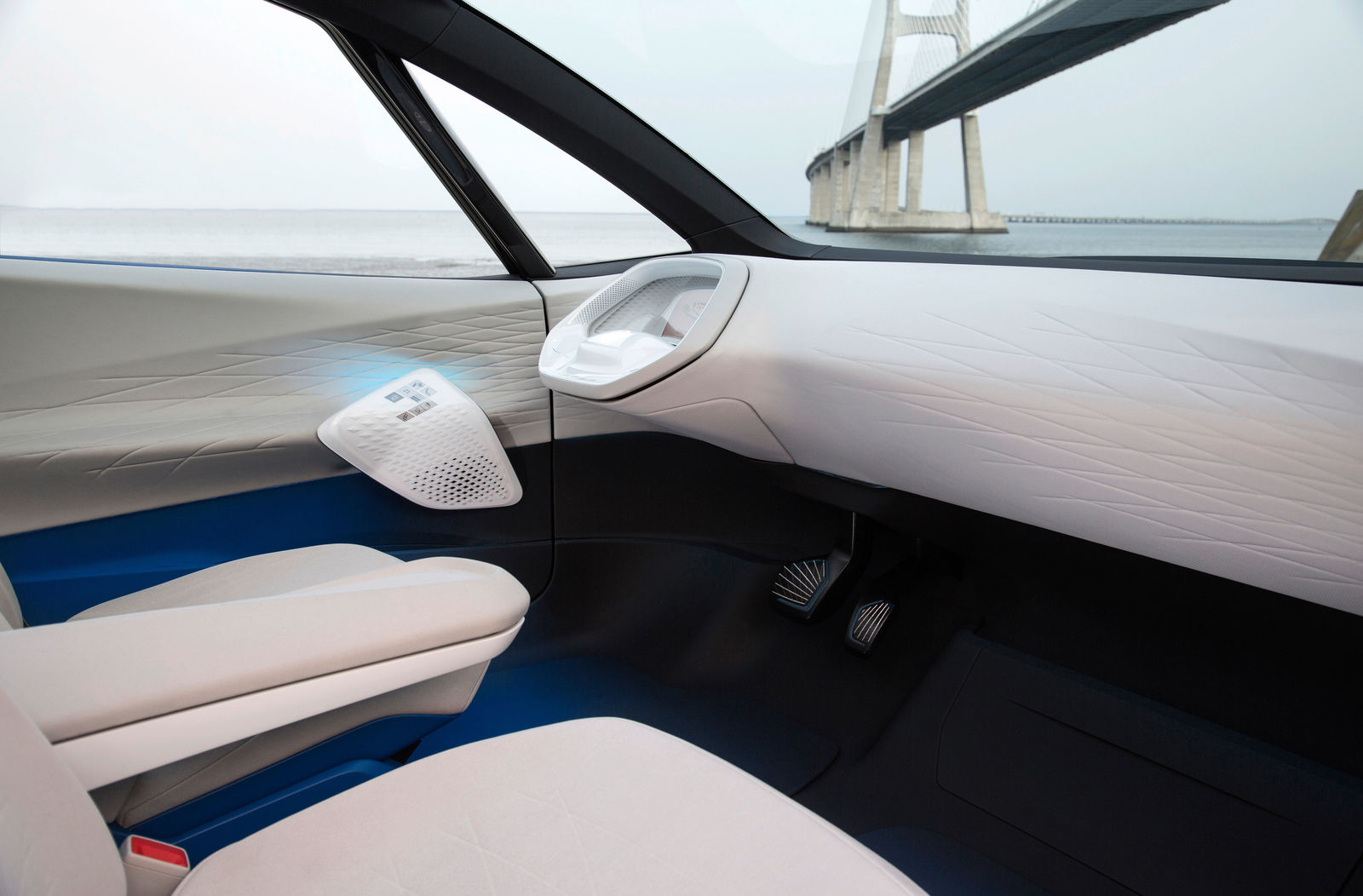Activating fully automated driving. I.D. is the first Volkswagen that is capable of fully automated driving. Activating the fully automated "I.D. Pilot" mode is easy: the driver just has to press the Volkswagen logo on the steering wheel for three seconds to switch from manual to fully automated mode. The I.D. indicates that it has changed mode with a range of optical signals: the ambient light changes from clear blue light, designed to focus on information intake ("Driving"), to a relaxed atmosphere, with a selection of colours available to choose from ("Auto") and during the transformation from manual to fully automated mode the light in the Volkswagen logo on the steering wheel pulsates, too. The light distribution of the ambient lighting expands to illuminate the back, and the I.D. signals via the Active Info Display and the AR-Head-up display that it is ready to take control. As soon as the driver takes his hands and feet away from the controls the steering wheel is retracted flush into the dashpad and the fully automated "I.D. Pilot" mode is active.
Four laser scanners on the roof. In fully automated driving mode the laser scanners are active. Four protrude from the roof of the I.D. in "I.D. Pilot" mode, but the smartly styled roof sensors are also visible thanks to indirect blue lighting, like the diffusers and side sills, to indicate that the I.D. is in fully automated mode. The fully automated mode is also indicated by blue illumination of the diffusers at the front and rear of the car, as well as the side sills. The I.D. is capable of detecting other road users not only using its laser sensors, but also with ultrasonic sensors, radar sensors, side area view cameras and a front camera. Traffic data is also constantly collected and compared with the vehicle data via the cloud.
Activating manual driving. Fully automated mode is deactivated by pressing the brake or accelerator pedals. The I.D. indicates that the driver has to take control again by switching the ambient lighting back (changing the colour and light distribution) and the pulsating light in the Volkswagen logo on the steering wheel and indications on the Active Info Display and the AR-Head-up Display, and the steering wheel comes out of the dashpad again, reactivating manual driving mode. Visual clues include the illumination of the accelerator and brake pedals and a lit pattern in the steering wheel.
Ambient lighting. As already outlined, the colour scheme and lighting mood of the ambient lighting change along with the manual and fully automated mode. The door panels, the areas under the seats, the seat surfaces and the lower section of the instrument panel are indirectly lit. The ambient lighting also floods into the cabin through a kind of woven mesh that extends between the A-pillars parallel to the windscreen and around the instrument panel. Form and function blend into one here: if a pedestrian appears beside or in front of the I.D., for example, a warning for the driver is projected on the illuminated mesh.
"Pilot for multi-storey car park". Driving yourself or being driven is by no means all that the I.D. can do. In multi-storey car parks Volkswagen's concept car can find a parking space all on its own. All the driver has to do is stop the I.D. in a specially marked zone in the entrance to the car park that is suitably equipped with the necessary infrastructure and activate the "Pilot for multi-storey car park" using the Volkswagen app, and off the I.D. goes! Just as in fully automated "I.D. Pilot" mode it is able to detect other cars as well as pedestrians, of course. To ask the I.D. to leave the parking space again, all the driver has to do is tell the Volkswagen to return to its starting zone again via the app.
